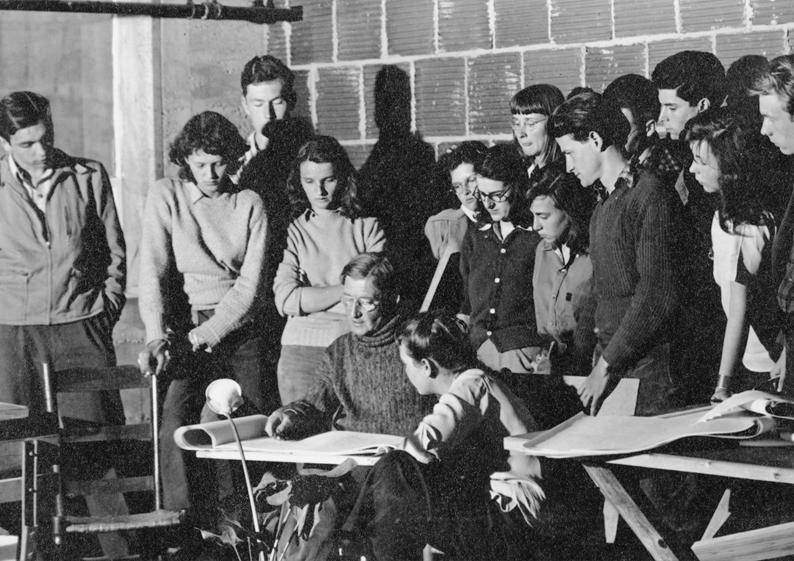


What you do with what you know is the important thing. To know is not enough.
John Rice, Black Mountain College founder
Black Mountain College was a small experimental college founded in 1933. Influenced by the utopian ideals of the progressive education movement, its founders conceived of education and everyday lifeas deeply intertwined and placed arts at the centre rather than at the margins of learning. The teachers and students at Black Mountain College came to rural North Carolina from around the United States and the world. Some stayed for years, others mere weeks. No matter their background or the duration of their stay, the people involved with the college experimented with radical new ways of teaching, learning, and living. They sought to place the teacher and student on equal ground, so that learning was mutual and collaborative. They embraced the mantra of the American philosopher John Dewey learning through doing and believed education happened as often outside of the classroom as in it.
They endeavored to create a diverse and ethical community that celebrated the idiosyncrasies of individuals. Most of all, they believed in art as a way of living and being in the world, in its capacity to expand one's internal horizons.
Founded during the Great Depression and open through World War II, Black Mountain College was perpetually cash-strapped. This culture of scarcity instilled an ethos of making-do, which carried through in everything from classroom exercises to theatrical productions, campus architecture and weekend parties. Buildings were made from stones that the students had gathered on the property and the elaborate theatre costumes they designed were created from simple materials like cotton balls and tin foil. Much of the art produced at Black Mountain registers the lean economic times of both the Great Depression and the rationing of the war years through their use of sundry materials, such as Anni Albers's jewellery made of wine corks and bobby pins.
Black Mountain College generated a rich field of art, craft, and performance. It served as an important gathering place for artists from Europe, Asia, Mexico, and the United States working in a range of styles and media. Artist migrs forced to flee war-torn Europe like Josef and Anni Albers, Xanti Schawinsky, and Ilya Bolotowsky taught alongside American artists suchas Willem and Elaine de Kooning, Robert Motherwell, and Franz Kline as well as John Cage, Buckminster Fuller, and Merce Cunningham. The school attracted students like Ruth Asawa, Ray Johnson, and Robert Rauschenberg who were seeking a different kindof education. Unlike many art schools, the college treated the distinct arts media non-hierarchically; painting, sculpture, music, and architecture were equal to woodworking, weaving, pottery, and dance. This encouraged individuals to think beyond the purely visual and to consider the selection of materials, the process of making, and the bodily engagement of the maker. Such qualities as touch and texture, resilience and sustainability, commitment and surprise emerged as the shared values of the cosmopolitan community.
Black Mountain College closed in 1957 due to lackof funds. Despite its relatively brief existence, the college helped to create the conditions for some of the most fertile ideas and individual artists to emerge in the second half of the twentieth century. Black Mountain College spanned the transition from the modern period to our contemporary era by negating the hierarchy of the arts and by treating the teacher and the student, the author and the audience, as equal partners in the sphere of education and culture.
Words byRuth Erickson. Images courtesy ofWestern Regional Archives, State Archives of North Carolina.
Watch our interview with Ruth Erickson here:
Add a comment